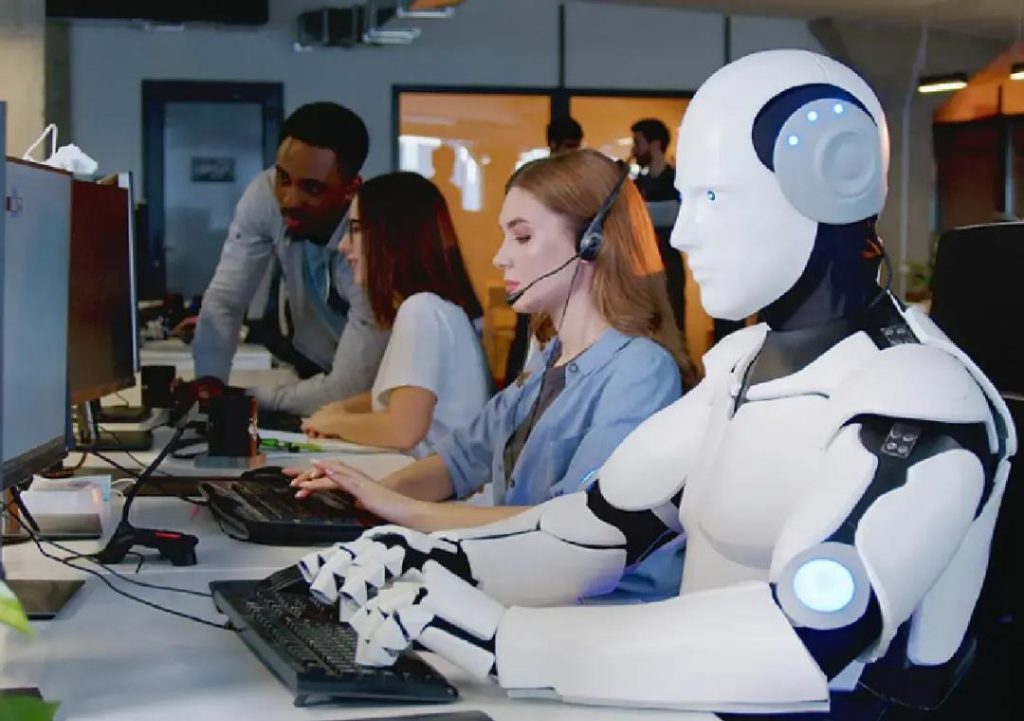
Shaping the Workplace of Tomorrow with Technology
The modern workplace is undergoing a significant transformation, driven by the rapid advancements in technology. Gone are the days of traditional, static offices, where employees were restricted to their desks and cubicles. Today, the future workplace is a dynamic, hybrid environment that combines the benefits of technology, collaboration, and flexibility. In this blog post, we’ll explore how technology is shaping the workplace of tomorrow and what organizations can do to create a future-proof environment that attracts top talent.
The Rise of Artificial Intelligence
Artificial intelligence (AI) is revolutionizing the way we work, making it possible to automate repetitive tasks, analyze large data sets, and provide personalized recommendations. In the workplace, AI-powered tools are streamlining workflows, improving efficiency, and enhancing decision-making capabilities. For instance, AI-driven chatbots are being used to provide customer support, while AI-powered predictive analytics are helping companies anticipate and prevent potential issues.
Moreover, AI is enabling remote work and flexible scheduling, allowing employees to work from anywhere, at any time. This flexibility is particularly beneficial for employees with caregiving responsibilities or those living in areas with limited public transportation. By leveraging AI-powered communication tools, teams can collaborate seamlessly, regardless of their physical location.
Collaboration Tools and Digital Platforms
Collaboration tools and digital platforms are another key driver of the modern workplace. These platforms enable real-time communication, file sharing, and project management, making it easier for teams to work together effectively. Cloud-based productivity suites, such as Google Workspace and Microsoft 365, are providing employees with access to a range of tools and applications, from anywhere, on any device.
In addition, digital platforms are enabling remote work and flexible scheduling, allowing employees to work from anywhere, at any time. These platforms are also providing employees with the flexibility to work on their own schedule, whether that’s 9-to-5 or 3-to-11 pm. This flexibility is particularly beneficial for employees with caregiving responsibilities or those living in areas with limited public transportation.
Hybrid Environments
So, what does the future workplace look like? It’s a hybrid environment that combines the benefits of technology, collaboration, and flexibility. In this environment, employees have the freedom to work from anywhere, at any time, using a range of devices and tools. This flexibility is not only improving employee satisfaction but also increasing productivity and efficiency.
To create a hybrid environment, organizations need to invest in the right technology and infrastructure. This includes investing in cloud-based productivity suites, collaboration tools, and digital platforms. Organizations also need to develop flexible work policies that allow employees to work from anywhere, at any time, while still maintaining communication and collaboration.
Attracting Top Talent
The modern workplace is no longer just about providing a comfortable and efficient work environment. It’s about creating a dynamic and adaptive workplace that attracts top talent. In today’s competitive job market, employees are looking for more than just a paycheck. They’re looking for a workplace that offers flexibility, autonomy, and the opportunity to work with a talented and diverse team.
By creating a hybrid environment that combines the benefits of technology, collaboration, and flexibility, organizations can attract top talent and stay ahead of the competition. In fact, a recent study found that 62% of employees would choose a company that offers flexible work arrangements over one that doesn’t (Source: Global Workplace Analytics).
Conclusion
The future workplace is driven by artificial intelligence, collaboration tools, and digital platforms. By creating hybrid environments, organizations can balance flexibility with efficiency, improving employee satisfaction, productivity, and efficiency. These advancements are not only transforming workflows but also attracting top talent seeking dynamic and adaptive workplaces.
As technology continues to evolve, it’s essential for organizations to stay ahead of the curve and invest in the right technology and infrastructure. By doing so, organizations can create a future-proof environment that attracts top talent and drives business success.
Source:
https://www.growthjockey.com/blogs/tech-forward-future-landscape-modern-workplace






